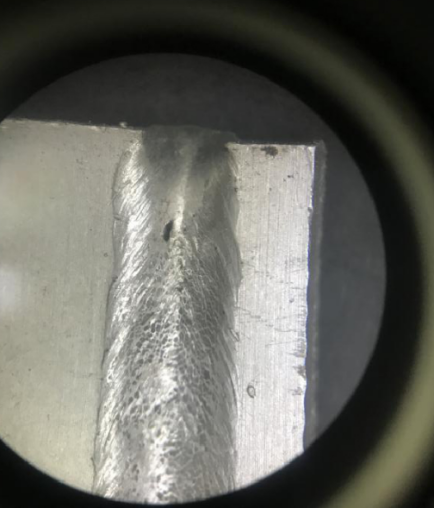Solutions to 5 Defects in Laser Welding
With the advantages of high efficiency, high precision, good effect, and easy automation integration, laser welding is widely used in various industries and plays a pivotal role in industrial manufacturing, including military, medical, aerospace, 3C auto parts, mechanical sheet metal Gold, new energy, bathroom hardware, and other industries.
However, if any processing method does not master its principle and process, it will produce certain defects or defective products, and laser welding is no exception. Only by having a good understanding of these defects and learning how to avoid them can we better utilize the value of laser welding and process products with a beautiful appearance and high quality. Through a long-term accumulation of experience, engineers have summarized some solutions to common welding defects for your reference!
1. Cracks
The cracks generated in laser continuous welding are mainly thermal cracks, such as crystallization cracks, liquefaction cracks, etc. The reason is mainly caused by the large shrinkage force of the weld before it is completely solidified, and measures such as wire filling and preheating can be reduced. or eliminate cracks.
2. Stomata
Porosity is a defect that is easily generated in laser welding. The molten pool of laser welding is deep and narrow, and the cooling rate is fast. The gas generated in the liquid molten pool does not have enough time to escape, which easily leads to the formation of pores. However, laser welding cools quickly, and the pores generated are generally smaller than those of traditional fusion welding. Cleaning the surface of the workpiece before welding can reduce the tendency of porosity, and the direction of blowing will also affect the generation of porosity.

3. Splash
The spatter produced by laser welding seriously affects the surface quality of the weld and can contaminate and damage the lens. Spatter is directly related to power density, and appropriate reduction of welding energy can reduce spatter. If the penetration is insufficient, the welding speed can be reduced.
Four, undercut
If the welding speed is too fast, the liquid metal at the back of the small hole pointing to the center of the weld will not have time to redistribute and will solidify on both sides of the weld to form an undercut. If the joint assembly gap is too large, the molten metal of the caulking is reduced, and it is easy to produce undercuts. At the end of laser welding, if the energy decline time is too fast, the small hole easily collapses, resulting in the local undercut. Controlling the matching of power and speed can well solve the generation of the undercut.
Five, collapse
If the welding speed is slow, the molten pool is large and wide, the number of molten metal increases and the surface tension is difficult to maintain the heavier liquid metal, the center of the weld will sink, forming collapses and pits. At this time, it is necessary to appropriately reduce the energy density to avoid The molten pool collapsing.
By correctly understanding the defects generated in the laser welding process and understanding the causes of different defects, we can more target solve the problem of abnormal welds in laser welding.
